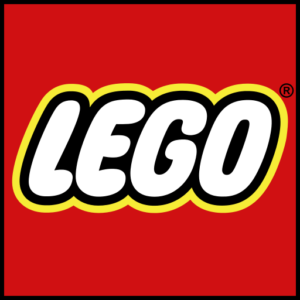Review: LEGO 10312 Modular Jazz Club
 15
15

The start of the New Year is traditionally an important time for LEGO fans, with one of the most anticipated new sets being released – the new 2023 Modular building, 10312 Jazz Club, which goes on sale on 1 January 2022.
10312 Jazz Club expands the beloved LEGO Modular Building collection, bringing nightlife, and groozy Jazz music to your Modular Street. Oh, and there’s some tasty pizza too.
Like the musical genre that inspired its design, 10312 Jazz Club is at times unassuming, subtle yet complex, and is all about the little flourishes of design improvisation.
It’s the little things that count, and upon building it, and getting to know all the little features, references and characters, helped make me appreciate it as a rich, layered and textured addition to LEGO’s Modular theme.
10312 Jazz Club goes on sale on LEGO.com (or your local LEGO Store) on 1 January 2023 for LEGO VIP early access, ahead of a 4 January general release date. See below for product pages, and regional pricing.
- 10312 Jazz Club [US] – US$229.99
- 10312 Jazz Club [AUS] – AU$349.99
- 10312 Jazz Club [UK] – £199.99
- 10312 Jazz Club [EU] – €229.99
- 10312 Jazz Club [CA] – CAD$299.99
If you’re thinking of picking up 10312 Jazz Club at launch, please consider using these affiliate links, as I may receive a small commission with each purchase. It goes a long way in supporting the work I do on the blog!
Let’s not waste any time, and jump straight into the review of LEGO 10312 Jazz Club!
Special thanks to LEGO for sending this set for this review!
10312 Jazz Club Set Details
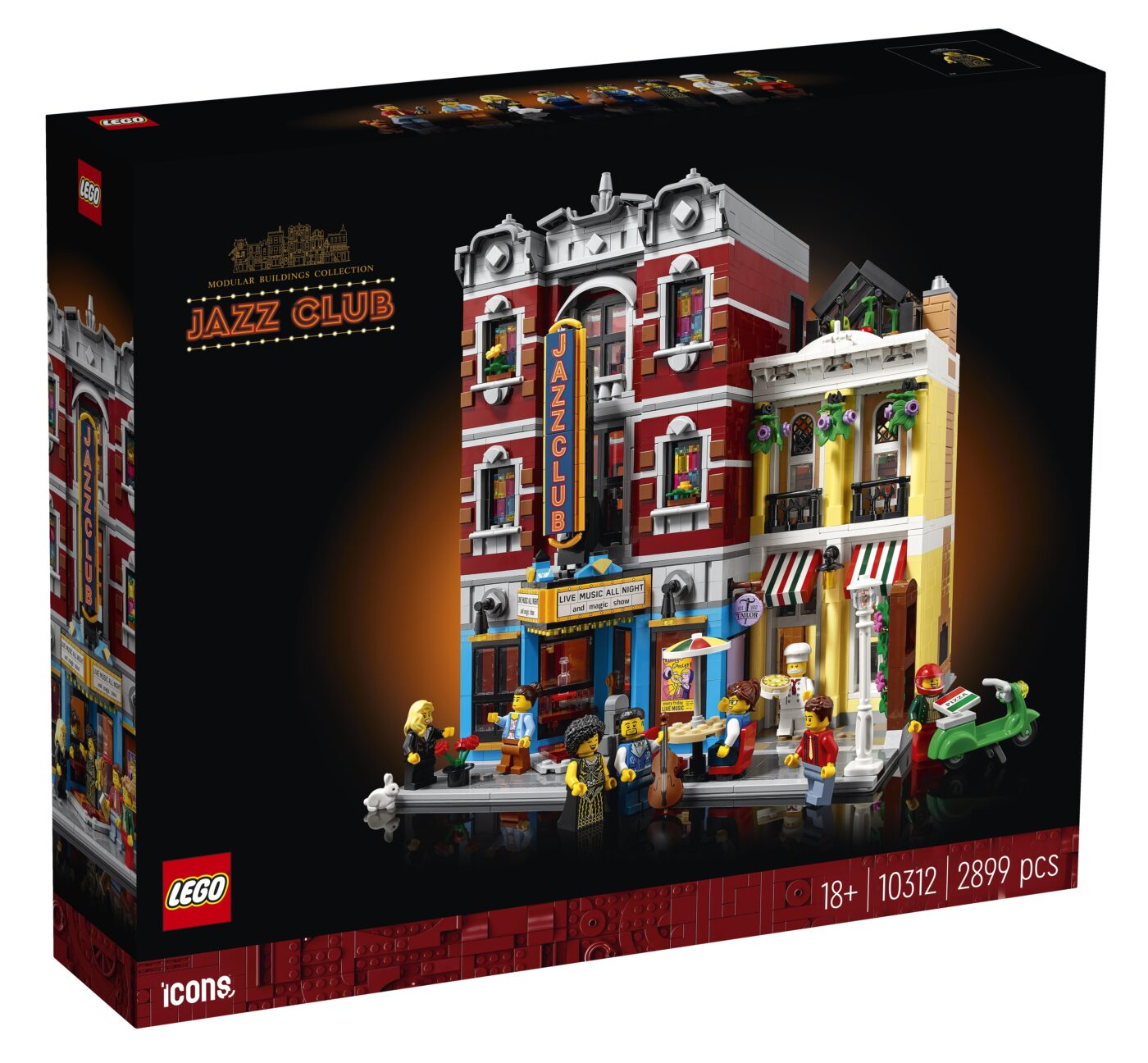
Name: Jazz Club
Set Number: 10312
Pieces: 2,899
Price: US$229.99 / AU$349.99 / £199.99 / €22.99 / CAD$299.99
Exclusive to: LEGO.com / LEGO Stores
Theme: LEGO Icons
LEGO Designer: Anderson Ward Grubb (@mrbrickerson)
Release Date: 1 January 2023

Let’s start with the worst thing about the 10312 Jazz Club, and soon, all LEGO Icons sets. The manual. Gone are the (mostly) black design manuals that match the LEGO for Adults black box design, and instead, we have these white, soulless, clinical manuals.
LEGO supplied a statement on this change.
“As our fans have noticed, the covers of building instructions for many of our sets underwent a re-design this year with exception of our LEGO® sets for adults. Starting from 1HY 2023, building instructions for adult sets will also feature re-designed covers with lighter background prints. The redesign of building instruction covers is connected to our move to paper-based bags in our boxes. A lighter background print ensures that we maintain our very high quality standards. In this case, that the visual appearance of the paper-based bags is not impacted by potential ink marks caused by friction between building instructions and bags during transportation.”
I am not a fan, and I really do not like these manual designs. It doesn’t inspire, or fill me with excitement, especially if you have to spend hundreds of dollars for a top-shelf LEGO set. This does not scream “premium” to me at all.


Thankfully, the insides of the manual are still nicely designed, with a lovely introduction by set designer Anderson Ward Grubb, as well as a description of the set.
Oh, and like all good modular buildings – there are is no sticker sheet greeting you. All parts, elements and decorations are printed, as they should be!
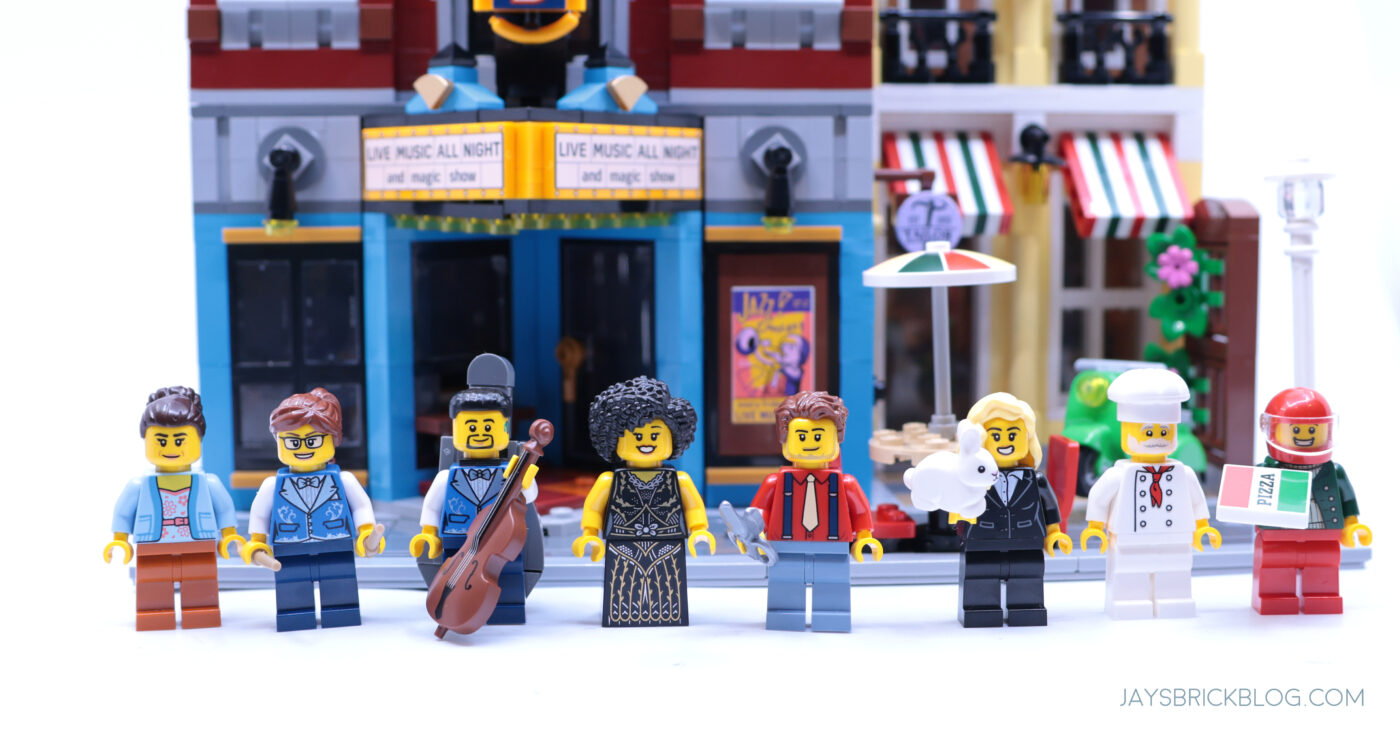
One of the most unexpected surprises of 10312 Jazz Club is the lineup of minifigures. With 8 minifigures included, it’s the modular with the second-most minifigures (after the larger 10255 Assembly Square) and they’re incredibly thoughtful additions to the build, that do more than just fill the space in with LEGO minifigures.
Each minifigure is well-considered, and serves a purpose in the set, and we also get the privilege of having two all-new minifigure designs introduced in the set, which is somewhat of a rarity, especially since it was pioneered by the Boutique Hotel.
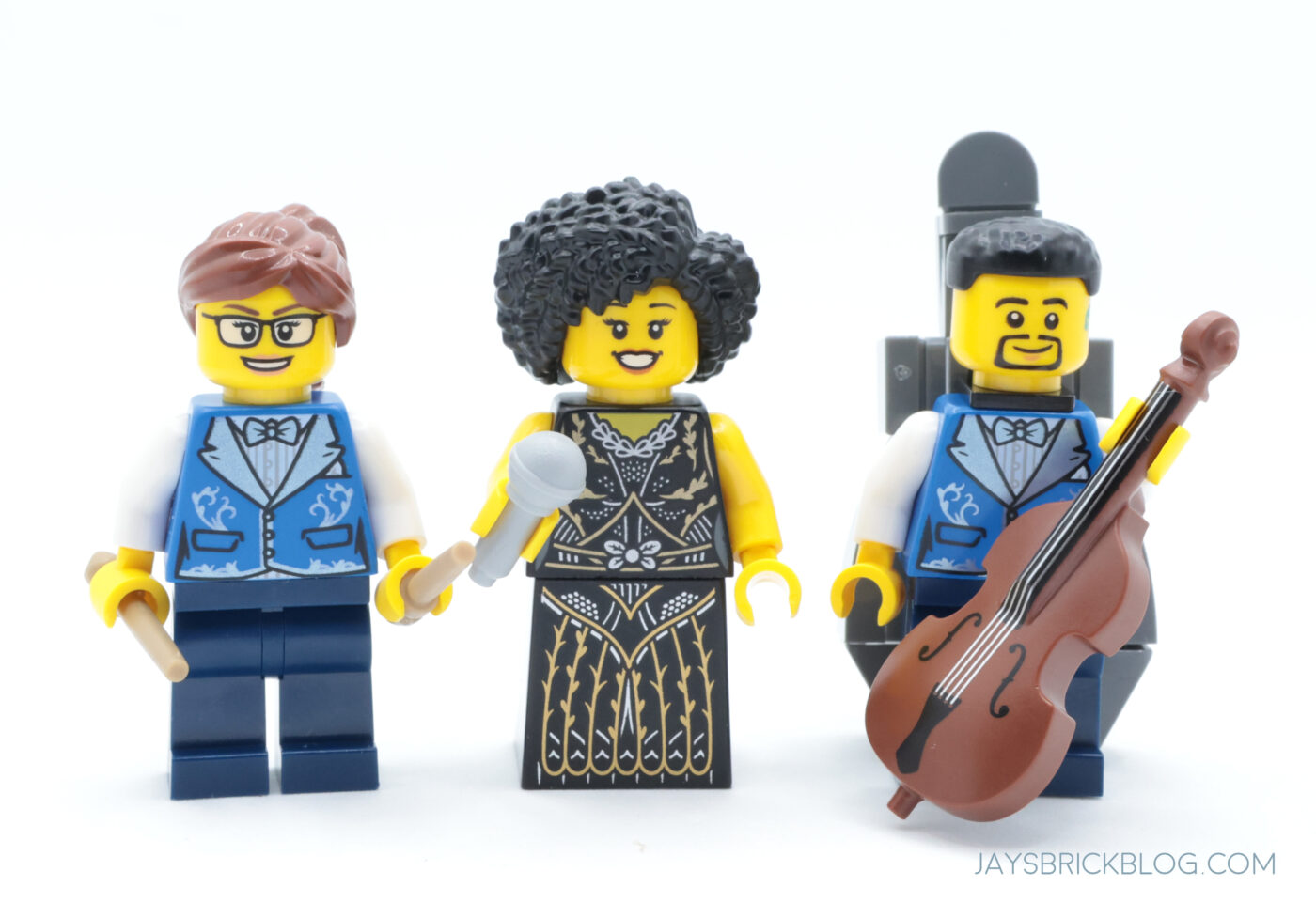
Here’s a look at the Jazz band trio, which features all-new torso prints! From left to right, we have a drummer, the lead singer, and a bassist!
The bassist and drummer, which seem to be session musicians have these great new blue vests on, but the start of the trio is the singer, with her elaborate black and gold dress. Alas, while the design is superb, the neck section is a little faded, an unintended consequence when LEGO prints yellow against a dark base.

Here’s a look at their back prints, the singer’s alternate face, and the fully brick-built double bass case that’s attached to the bassist’s neck bracket.
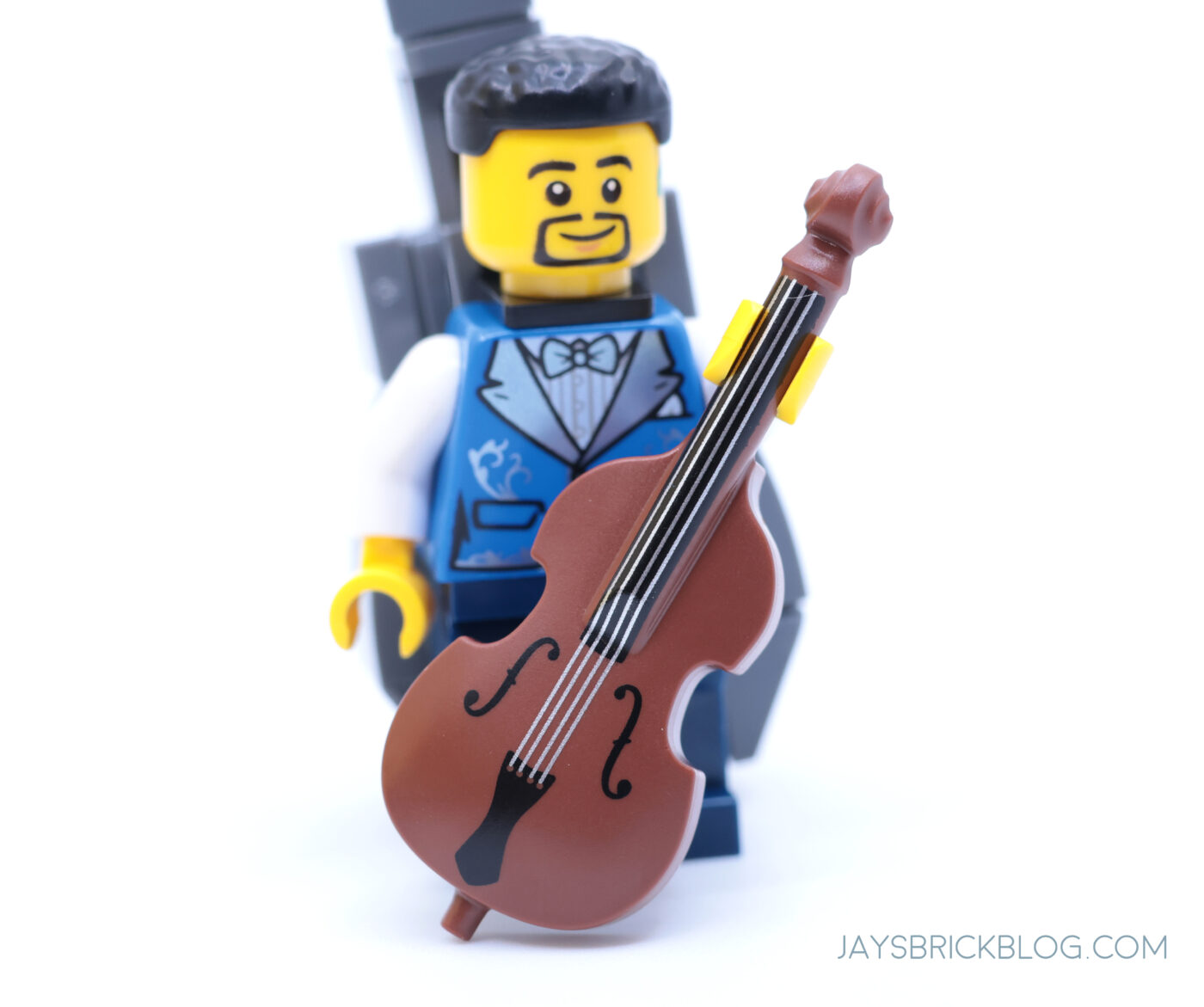
Speaking of the bassist, he comes with a brand new LEGO Double Bass accessory, which was originally developed and designed for LEGO Vidiyo. It looks excellent, and can probably double as a Cello as well.

Oh and the bassist also has a hearing aid, which is neat and aligns with LEGO’s push to improve diversity and representation with minifigures. It’s a nice message to send, that even with a hearing impairment, that’s no barrier to playing music in a jazz band.


For the Pizzeria, we have a Pizza Chef, and a Pizza Delivery driver. Doesn’t the Pizza Chef look like Santa? Maybe this is Santa’s day job when he’s not working for the rest of the year.

And last but not least, we have the Tailor, Jazz Club Manager and a Magician. These are all City-type minifigures, and don’t have anything special about them, but I like the addition of the Magician, which shares the stage with the Jazz Band, and performs right after, making the venue a multi-purpose entertainment value.
She comes with a top hat where she can can pull flowers, colourful handkerchiefs or a rabbit out of it!

Here’s a look at their back printing.
Overall, a really great lineup of minifigures, and with 8, ensures that you can fill the space up really well. I also like that each minifigure has a distinct identity, and role to play, further increasing the story-telling potential of the set.

Here’s a look at the Jazz Club’s sidewalk, which has the contractually obligated lamppost, and a small table with an umbrella on it.


Astute LEGO history enthusiasts will immediately recognise the umbrella design as an homage to the classic LEGO Town set, 6350 Pizza To-Go, which heavily influenced this set, and the inclusion of the Pizzeria.
The umbrella isn’t an identical replica, as the design team wanted it to better match the colours of the modular, instead of being a 1:1 re-creation.

The facade and the entrance to the Jazz Club is vibrant, with the dark azure paint giving off dynamic vibes. It injects a lot of colour into the usually neutral modular building facade, and I like it. Its a Jazz Club, so it has to have some pizzazz.

Here’s a look at the Now Playing sign, which of course are printed 2×6 tiles.

I love this poster for a Jazz Concert on the side of the entrance, especially a nod to the classic LEGO Trumpet that’s a staple of the LEGO Western sets.

And above it, we have the printed Jazz Club sign. It’s helpful that we have the words JAZZ and CLUB printed, which I’m guessing will come in handy for MOC builders, and for new parts enthusiasts, we have a new Bright Light Orange Sausage piece, which is used to give it a pleasing rounded edge.
It’s striking, and while not as orthodox as a brick-built sign, does still work thanks to its legibility.
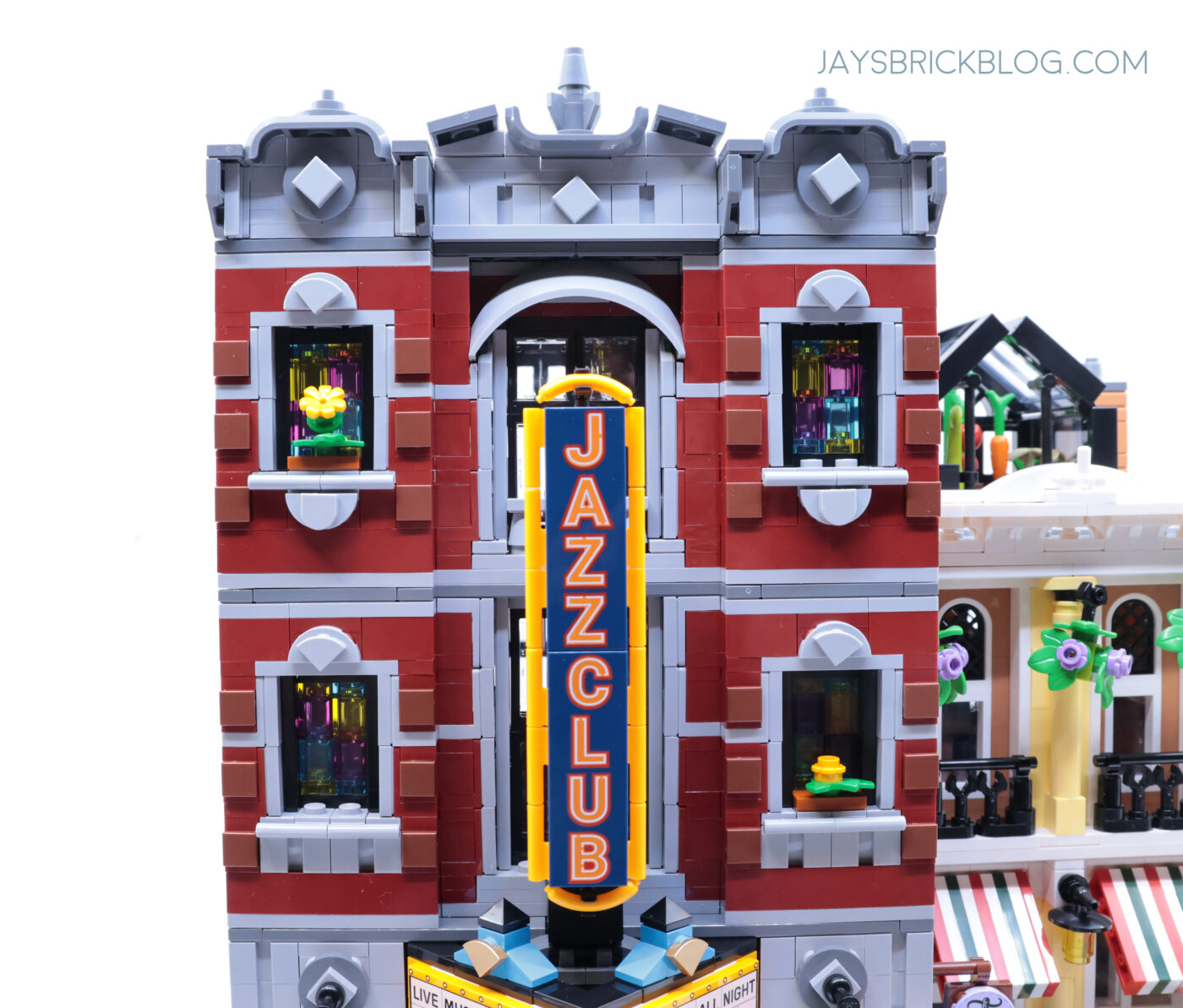
Here’s a look at the dark red first and second floor facade. It’s a fairly simple design, and the designer referenced the style of building from metropolitan centres like Chicago and New York.

The windows have some unassuming features – the multi-coloured glass gives it a bit of personality, and I like the use of the 2×1 gray plate with bar handles for the window sill – a staple of LEGO Classic Space sets that made its debut way back in 1978!
It’s great to see it being applied here, in a 2023 Modular Building.

The windows also utilise this very cool new semi-circle jumper plate element! It’s such a nice geometric design, and the addition of the stud will make this a hot commodity with MOC builders.

And here’s a look at the roof design. The greys are a little plain, and I like the square tiles oriented in the shape of a diamond, but the wheel rims are a little distracting, and the shape is a little strange to me.

Oh and on the roof, is a little nest made by a squirrel. I really like seeing animals in modular buildings, as they add a small element of unexpected fun.

And here’s an entrance to the stairwell.

Down to the Pizzeria, I like this little screen which has flowers growing on them. It adds a nice bit of brown and natural element to the otherwise concrete and developed street.
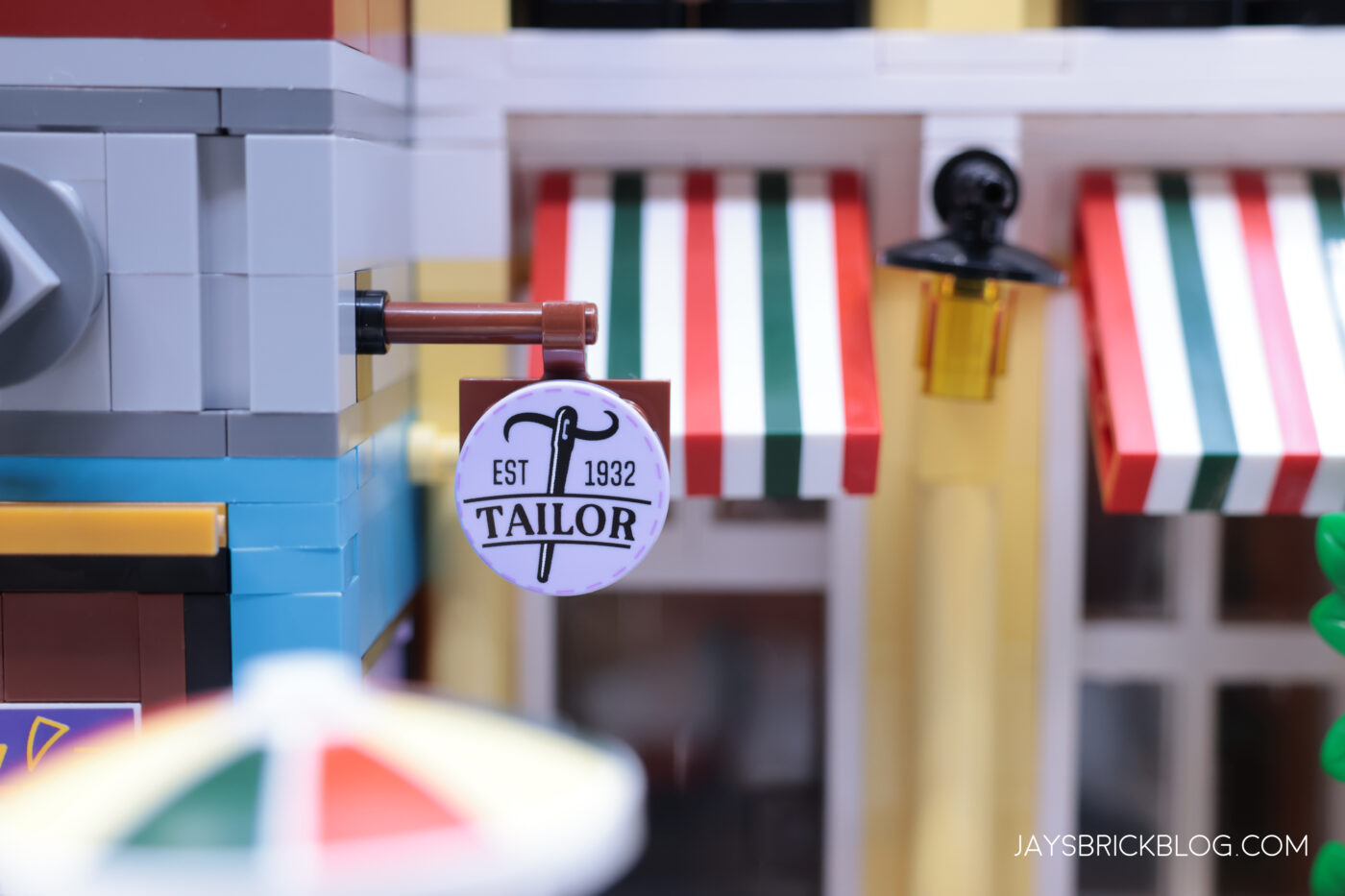
There’s also a printed tailor sign – love the 1932 reference, which is a nod to LEGO’s founding year. The tailor also has its own entranceway to the stairwell, meaning that you don’t need to enter through the pizzeria, or jazz club to get to it.
It’s a really simple design choice, but reflects a very mature and realistic take on building architecture.

The awnings of the Pizzeria are a missed opportunity. I wish that the colours would’ve been arranged in a manner that reflected the Italian flag.

The pale Light Yellow Pizzeria colour scheme has been a little contentious, but I like it – it reflects New York architecture and is a little kitsch without going overboard.


Above the Pizzeria section is this lovely greenhouse where the Chef grows his own produce to use for his pizza. Everything else, he gets from the Green Grocer 🙂

I like that the greenhouse can be easily detached, and it’s connected to the back wall, and not the floor.
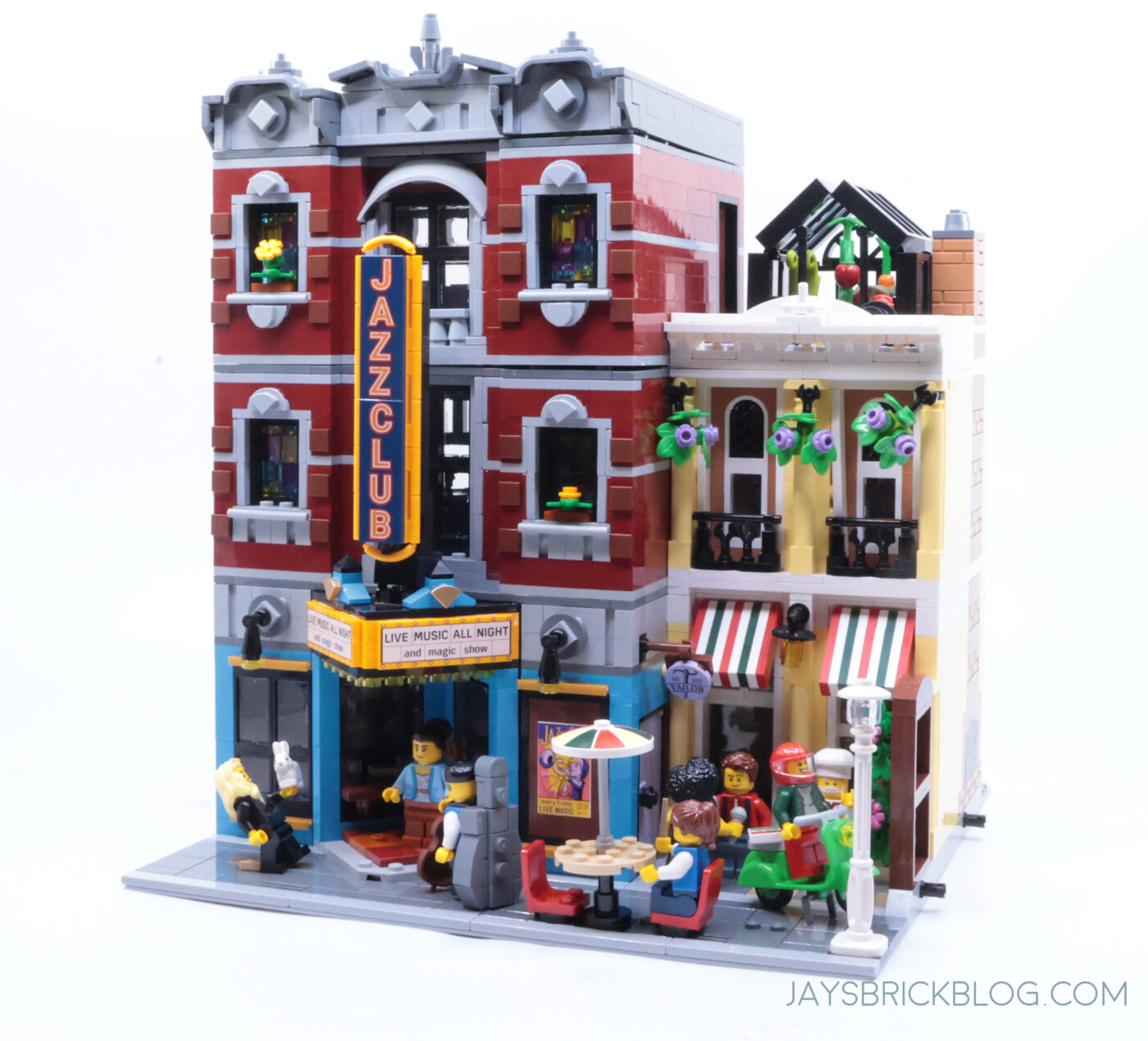
Overall, I think the facade works. I really like the two building approach, as it provides a really nice visual effect, as your eyes scan from side to side. It evokes high density city living, and the colours are refreshing, allowing it to stand out against the other Modular Buildings on the street.
Plus, it’s a Jazz Club and Pizzeria, two venues that you’re meant to frequent at night. Having a bold colour scheme for the Jazz Club, especially the ground floor facade does work as it’s meant to be seen and noticed in the twilight hours, and yellow just works for the Pizzeria, even if it looks a little cheesy.

Here’s a look at the floorplan of the ground floor, most of it is occupied by the Jazz Club’s music hall, and you can see here the simple tiling work on both sides, as well as the main stairwell connecting all the different parts of the structure.

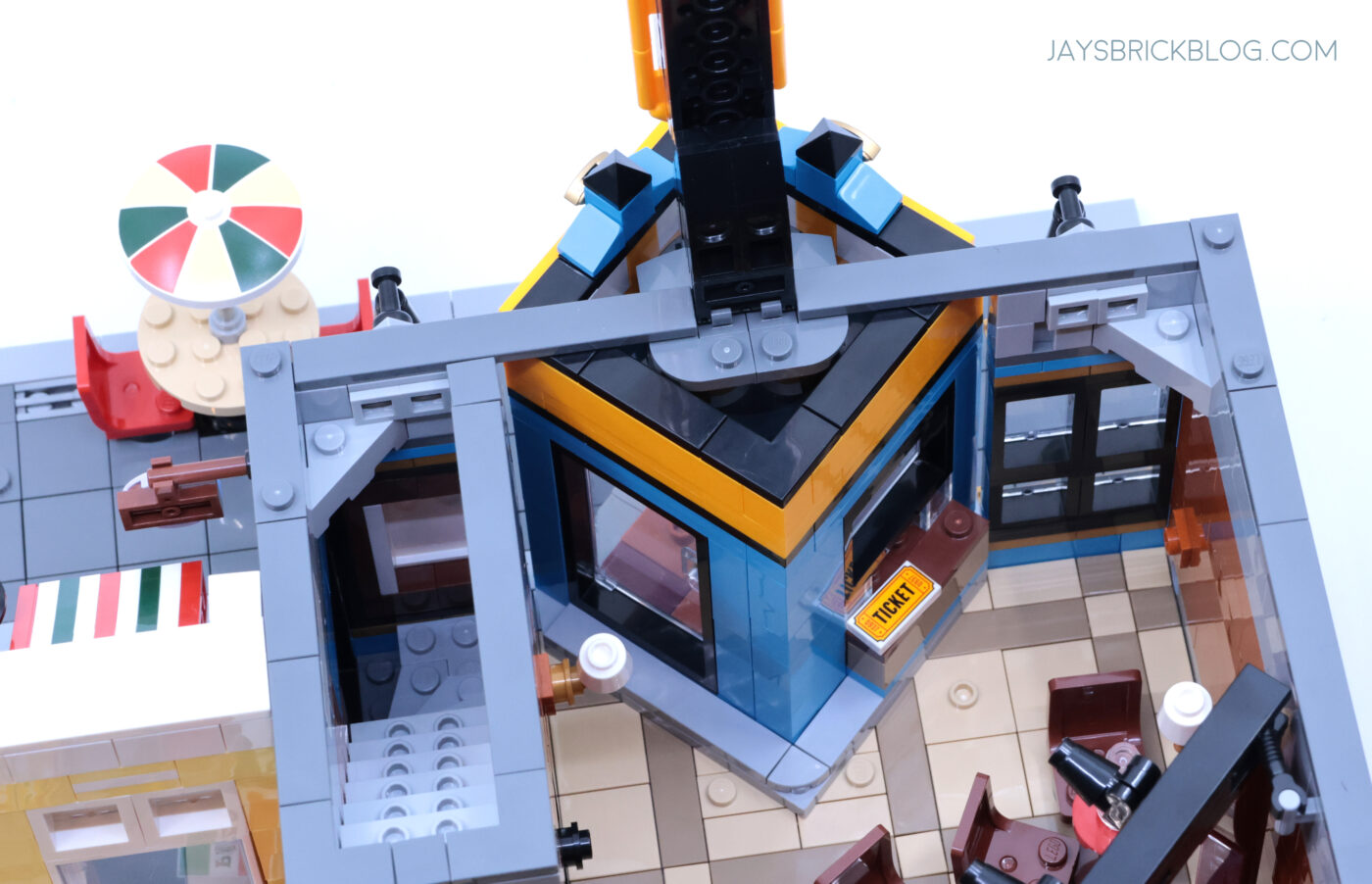
The design of the ticket booth, which is placed at an angle to the Jazz Club entrance is masterful. Props to Anderson Ward Grubb for pulling this off so effortlessly, and again, introduce some innovation to the facade design and structure that’s just a little something extra compare to modulars of old.
Jazz, am I right?

Here’s a look at the stage, which is small, but fits all 3 band members, and also has space for a drum kit, and saxophone stand. Maybe for Andy Sax? The curtains and lighting are removable as well, if you want to switch up the look.

It’s super hidden, and something you can only get to see during the build, but there’s a small toilet under the staircase, that’s not the easiest to access or see when the model is complete. It’s hard to find, but it’s there!

There’s a large archway connecting the Jazz Club to the Pizzeria, handy for snacks or to pop in between music acts for a slice of tasty pizza.
One of the most underrated thing about 10312 Jazz Club is the flow and design of the internal rooms – it feels extra intuitive for the minifigures to navigate, and has some really nice sensibilities to it. Very thoughtful and considered.

Here’s a look at the Wood Fired Oven, and Pizza making station. There’s some sausage, some pizza dough, cash register, bottle of pesto, and a block of cheese on his counter.


Interestingly, there’s a brand new mudguard element, which is used for the Wood-Fired Pizza oven! Can’t wait to see how this very useful element will be used in future LEGO sets.

Oh and behind the pizzeria is this little cache of firewood!
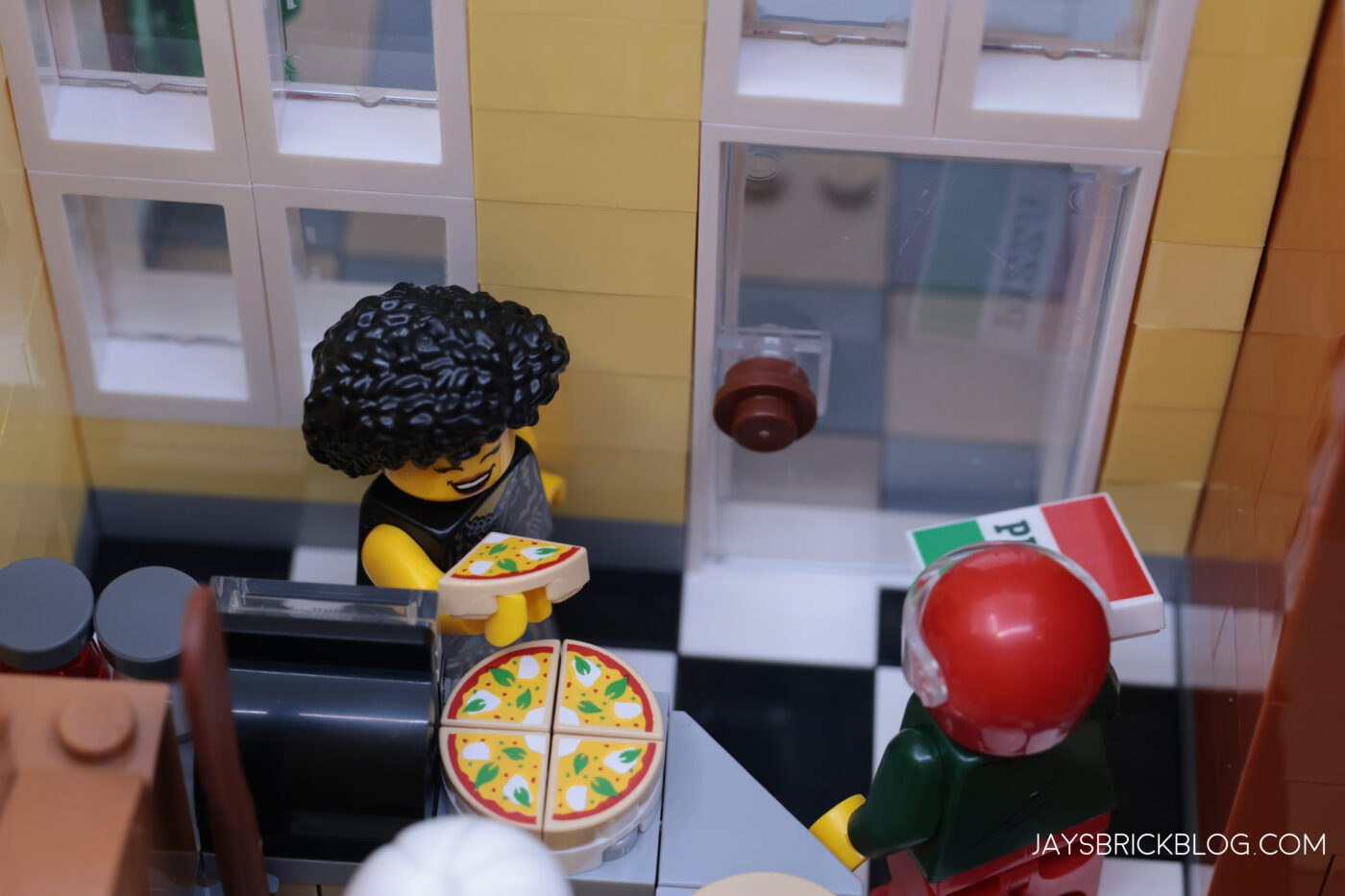
Here’s a look at the front of the counter, where the singer is sneaking in a delicious slice of margherita pizza.

Oh, and here’s a closer look at the new LEGO Pizza flavour – Margherita! An excellent choice, and the superior pizza flavour that’s second to note. Apologies to Pineapple on Pizza people, maybe one day your abomination will have its day, but today is not that day!
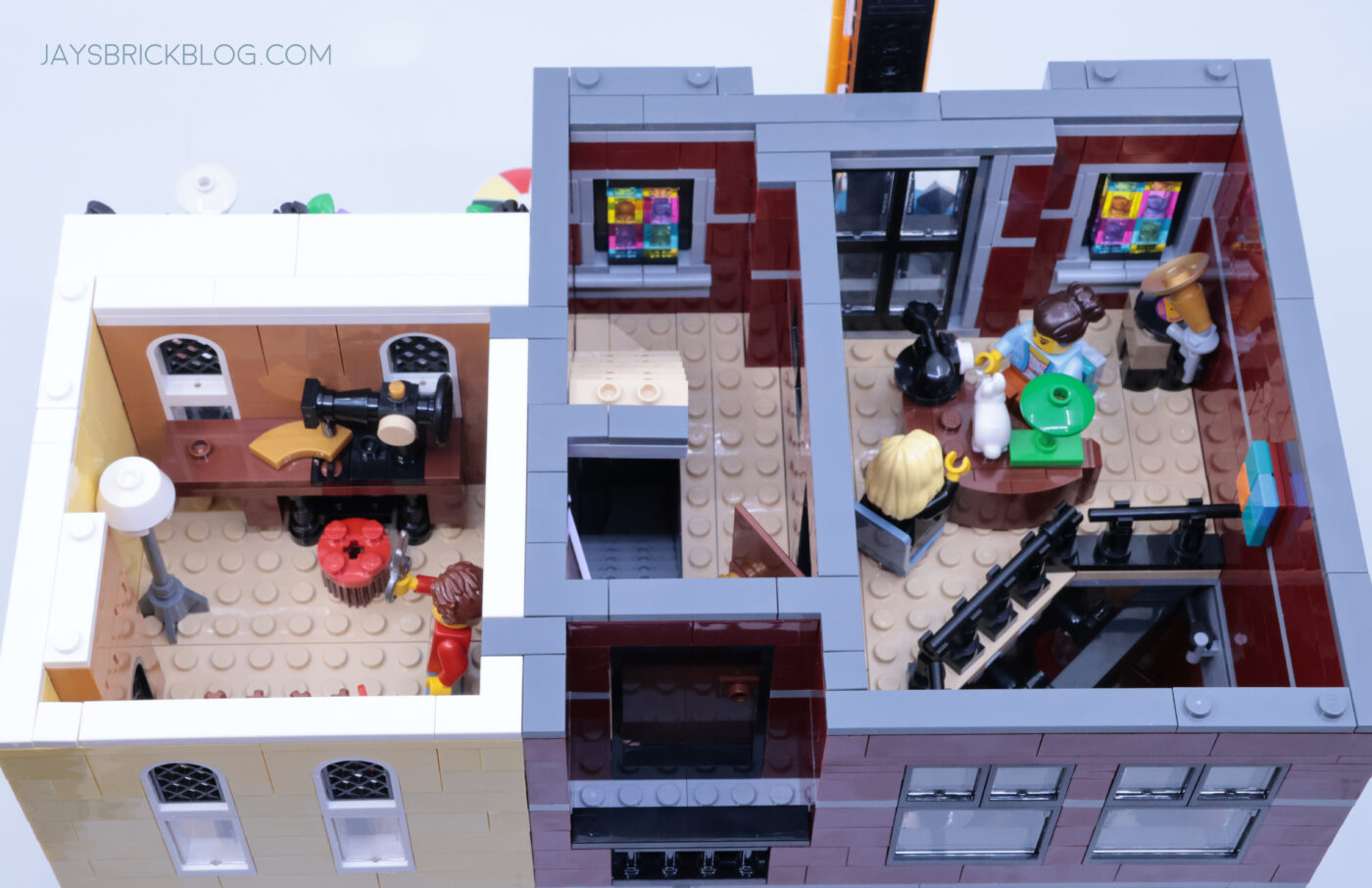
Next, let’s check out the first floor spaces!

Above the Jazz Club is the manager’s office, which is quite sizable! There’s a balcony for the manager to watch the Jazz Band play, and also listen from up above.


The Manager’s office is tastefully decorated – I love her brown desk design which was a blast to build, as well as the gramophone/record player in the corner, right next to the colourful window panes!

There’s also some cool art hanging in her office? Do you remember where this is from?

Across the manager’s office is a Tailor, which has quite a large space decked out with rolls of fabric, and a brick-built mannequin.

And on the other side of the room is this incredibly gorgeous sewing machine. The furniture in the Jazz Club was seriously a joy to build, and this takes the cake as one of the most enjoyable and well-designed piece that livens up the interiors.

And last but not least, on the top floor of the Jazz Club is a dressing / rehearsal room, a large room where performers can relax or get ready or rest in between shows.

The yellow couch is really groovy, and you’ll also notice this art piece, which was sourced from the El Cubo Fine Art Gallery from the Boutique Hotel.

And on the other side of the room is a dressing room mirror. Instead of stickers (of which there are none), the designer opted for a drum-lacquered tile instead which kinda works.


And that’s it for the Modular Jazz Club! There’s some really clever use of space within, with every space, piece of furniture and even minifigure feeling absolutely intentional in their design and placement.
Like Jazz, there’s so much more going underneath the melody and facade of the Jazz Club, and it’s one of those rare modulars where the interiors are as balanced in their appeal as their exteriors, the latter of which is usually what fans fixate on.
The exteriors look good. The vibrant colour scheme works well, and the two-building design is a great design call, breaking up your visual path in the most pleasing manner.
How does 10312 Modular Jazz Club look like with other Modulars?
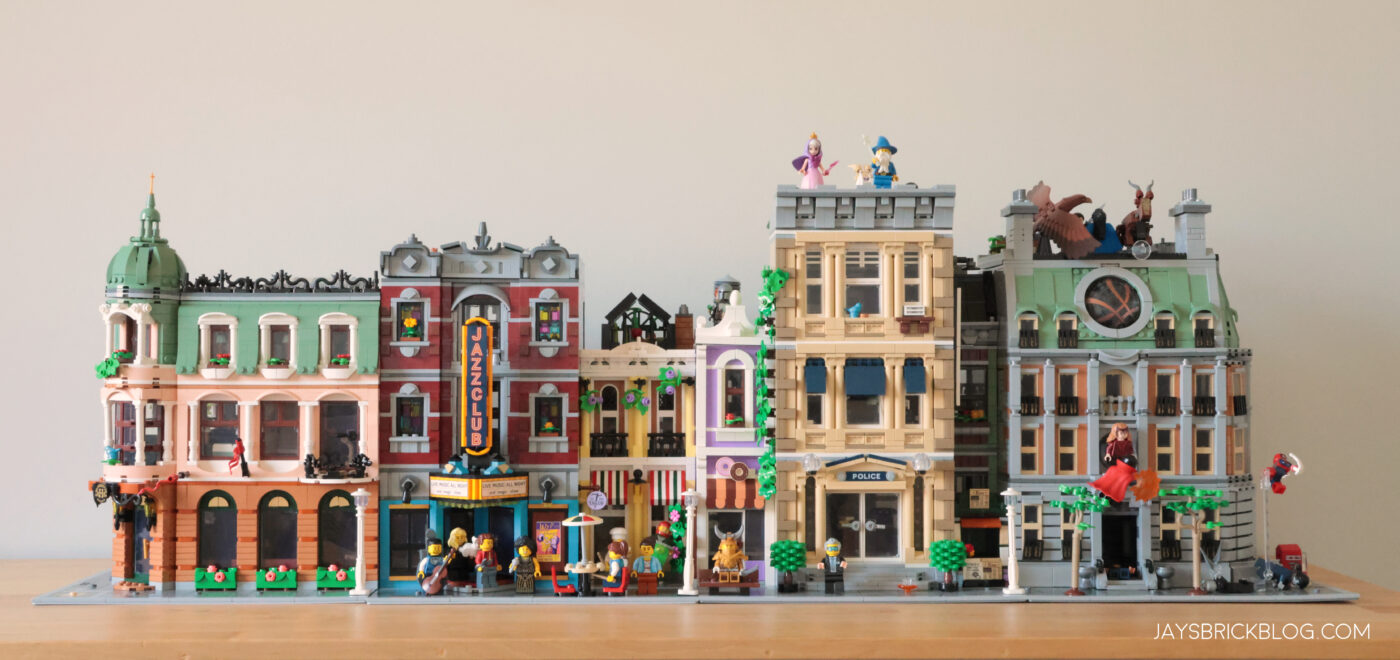
This is of course the question on every modular fan’s mind before they take the plunge. How does it look next to my other Modulars in my collection?
Here it is next to the Modulars that I have currently built and are on display at home, all of which are “active” and still available for purchase.
I’ve placed it alongside the Boutique Hotel, Police Station and the pseudo-modular 76218 Sanctum Sanctorum.


As you can see, I think the colour scheme works terrifically well against some of the more neutral buildings, giving the street a much-needed pop of colour that still feels restrained and believable.
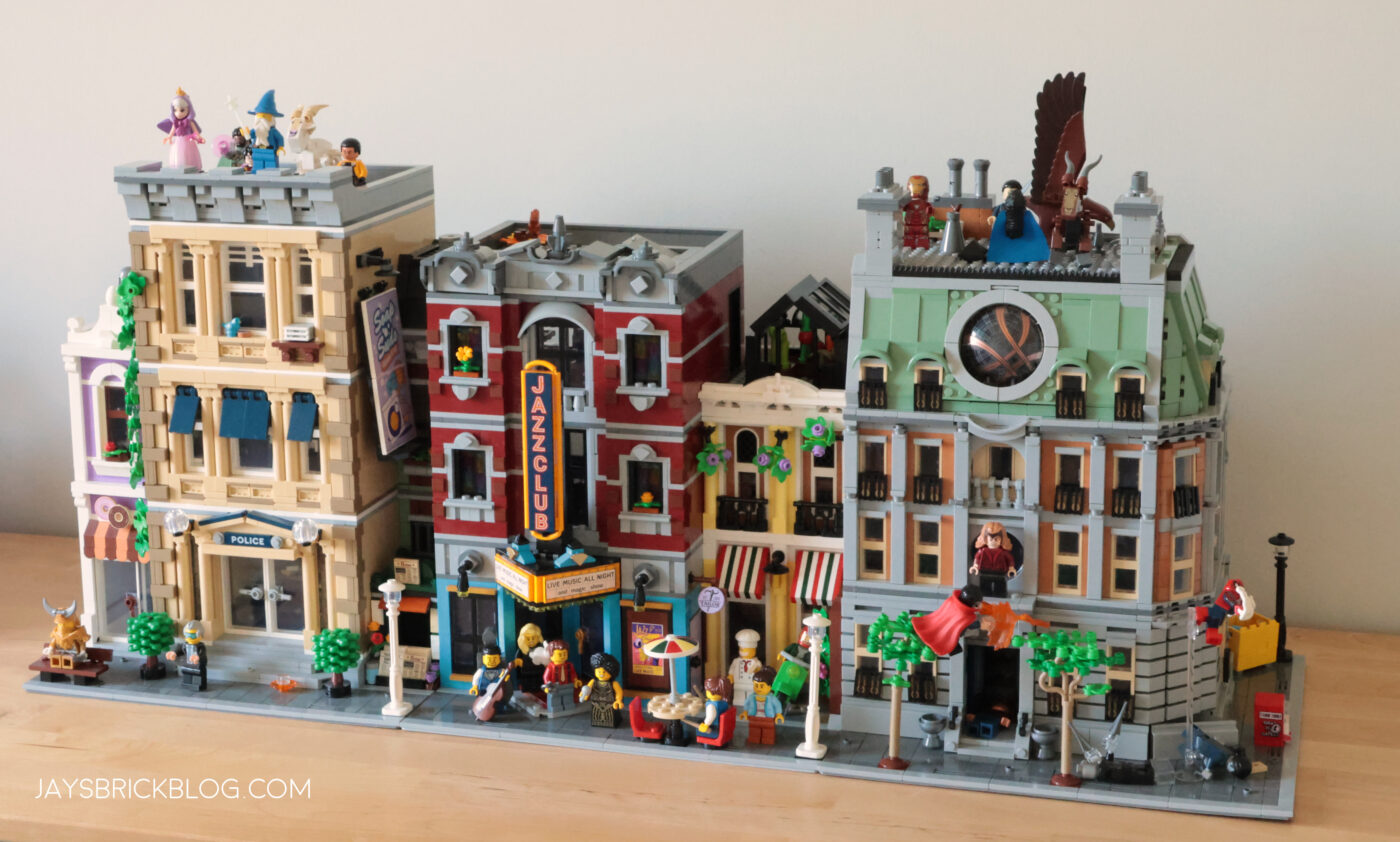
I actually wouldn’t put it close to the Boutique Hotel, as it has too much of a Mediterranean, Southern European look to it, but against more “street-facing” modular buildings like the Police Station and Sanctum Sanctorum, you can see how it shines.
What I liked:
- Great facade design that elevates architecture through colour
- Awesome lineup of minifigures make it lively
- Interiors are well-designed, usable and flow well
- Printed decorations galore
What I didn’t like:
- May not mesh well with some modulars like the Boutique Hotel
- Wasted opportunity with the Italian flag awning
- Roof design is a little bland
FINAL THOUGHTS:
A hallmark of a good LEGO Modular building lies in its ability to impress as a standalone build and model, as well as how well it integrates with other modulars on your street.
The Jazz Club manages to thread the fine line between both, with an engaging build that keeps the Modular formula fresh with a number of fun furniture pieces to punctuate the familiar build experience.
The architecture and facade, while contentious in some camps thanks to its vibrant and slightly unusual colour choice, I think is one of its biggest strengths, as it helps the Jazz Club stand out against other structures on the street.
The two building design also works well. It’s a little reminiscent of the Pet Shop or Detective’s Office, and it succeeds in creating some visual differentiation as yours eyes scan across the facade.
Jazz isn’t for everyone, and it takes a while to really appreciate the symphony and sometimes clashing instruments. Somehow, the Jazz Club works, blending a Tailor, Pizzeria, and Jazz Club into one without skipping a beat. It’s unorthodox, but somehow the ingredients work together.
The addition of the minifigures, all of which have useful roles to play just tie everything together, giving it a really lively feel, with characters and roles you can relate to. I like the idea that the seats in the Jazz Club are empty, as it invites other minifigures from your other Modular Buildings (if you have any!) in for an evening of fun.
10312 Jazz Club isn’t a genre-defining modular. It isn’t as visually striking or elegant as the Boutique Hotel, and doesn’t have cohesive real-world architecture flair like the Police Station, but where it excels is that it introduces a new sound to the Modular Buildings collection, and serves as a fun, vibrant venue for evenings on the Modular Street.
Like Jazz, it’s the little things, subtle flourishes and sometimes odd improvisations that make the experience enjoyable, and you’ll be enthralled by the little surprises and delights of 10312 Jazz Club.
If you’re a fan of Modular Buildings, 10312 is an easy recommendation, although I’ll stop short of asking you to go out and buy it immediately, unless there’s a GWP you’re after, or a cool promotion like Double VIP Points.
For those getting into Modulars, it’s also a great starter Modular, with all the hallmarks of a very good Modular set, that will likely cause you to want to add and expand your collection as soon as you’re done.
Rating and score: 4/5 ★★★★✰
Build [4] – Standard modular approach, with some fun furniture surprises
Real Value [3] – With a generous number of printed elements and plenty of minifigures, the price feels fair
Innovation [3] – I love the use of colours, and the return of a two-building facade
Coolness [4] – Jazz is really cool, and this combined with the Pizzeria creates for some groovy vibes. Also, the Double Bass!
Keepability [4] – A fantastic, cultured addition to your Modular Street. Not one you’d put away unless you absolutely need to free up space. For More modulars.

Thanks SO much for reading, and I hope you enjoyed this early review of 10312 Jazz Club!
10312 Jazz Club goes on sale on LEGO.com (or your local LEGO Store) on 1 January 2023 for LEGO VIP early access, ahead of a 4 January general release date.
If you’d like to dig in to more of the backstory behind 10312 Jazz Club, check out insights from an interview with Jamie Berard, father of LEGO Modulars and this exclusive interview with set designer Anderson Ward Grubb on my Youtube channel.
What do you think of the Jazz Club? Do you think it fits in well with other Modulars?
Special thanks to LEGO for sending this set over for an early review!
To get the latest LEGO news and LEGO Reviews straight in your inbox, subscribe via email, or you can also follow on Google News, or socials on Facebook, Instagram (@jayong28), Twitter or subscribe to the Jay’s Brick Blog Youtube channel.





